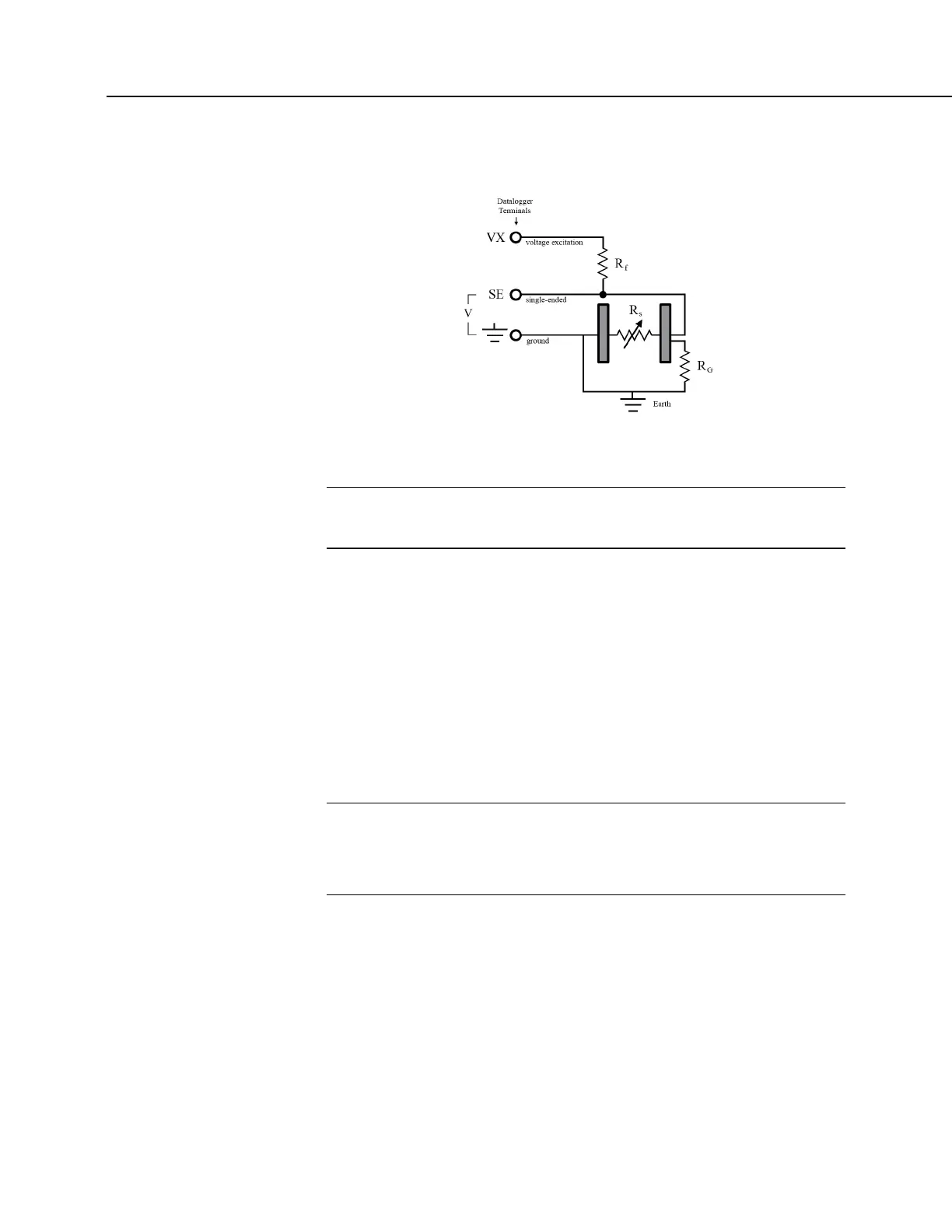Section 7. Installation
FIGURE 32: Model of a Ground Loop
with a Resistive Sensor
7.4 Protection from Moisture — Details
Protection from Moisture — Overview (p. 85)
Protection from Moisture — Details (p. 102)
Protection from Moisture — Products (p. 580)
When humidity levels reach the dew point, condensation occurs and damage to
CR800 electronics can result. Effective humidity control is the responsibility of
the user. The CR800 module is protected by a packet of silica gel desiccant,
which is installed at the factory. This packet is replaced whenever the CR800 is
repaired at Campbell Scientific. The module should not normally be opened
except to replace the internal lithium battery.
Adequate desiccant should be placed in the instrumentation enclosure to provide
added protection.
7.5 CR800 Setup — Details
Related Topics:
• CR800 Setup — Overview (p. 83)
• CR800 Setup — Details (p. 102)
• Status, Settings, and Data Table Information (Info Tables and Settings)
(p. 527)
Your new CR800 is already configured to communicate with Campbell Scientific
datalogger support software
(p. 86) on the RS-232 port, and over most comms
links. If you find that an older CR800 no longer communicates with these simple
links, update the operating system and do a full reset of the unit, as described in
Resetting the CR800
(p. 415). Some applications, especially those implementing
TCP/IP features, may require changes to factory defaults.
Configuring modifies the firmware of the CR800. Programming modifies the
CR800 CRBasic program. Settings are key to configuring the CR800.

